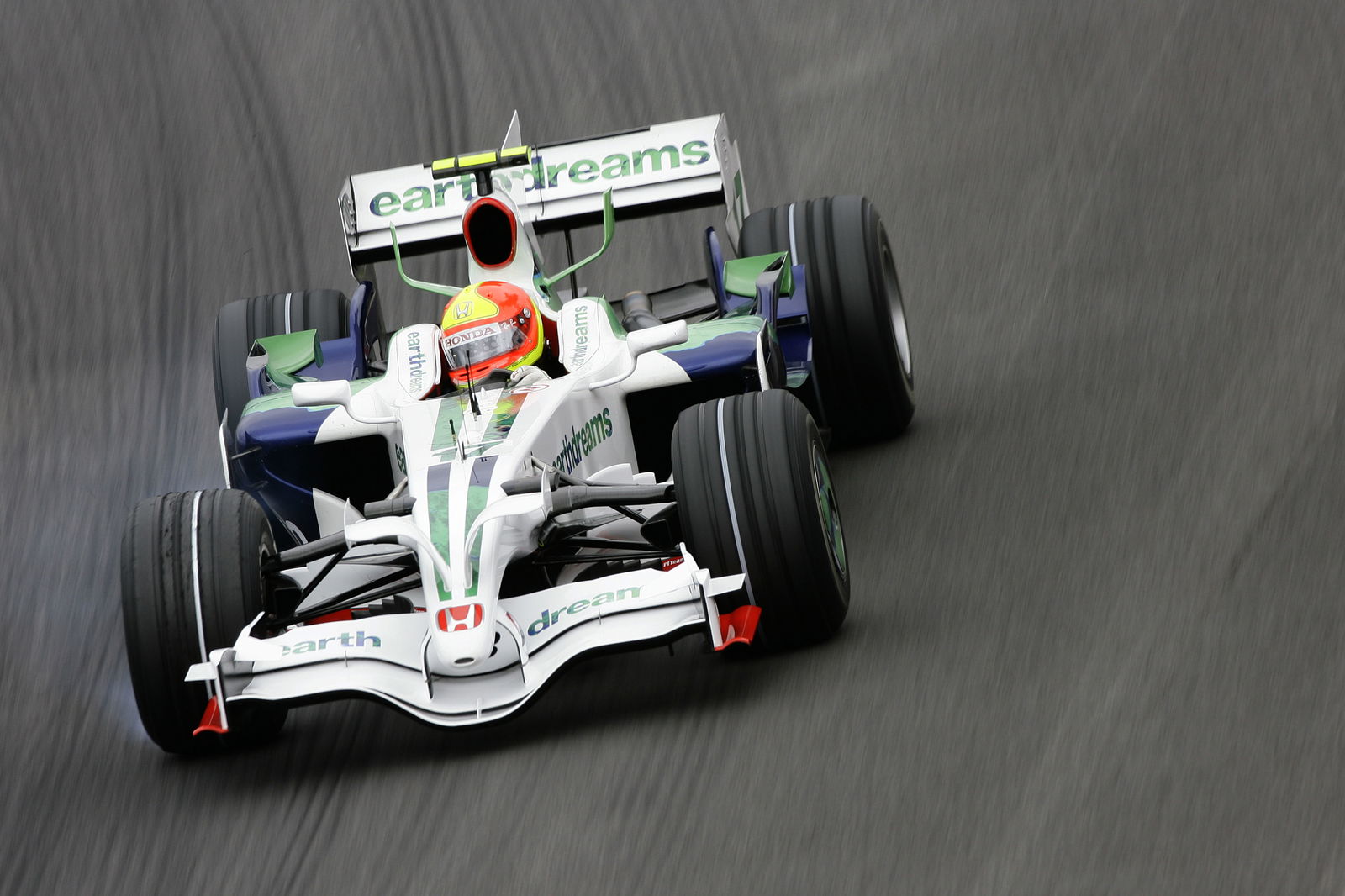Bridgestone to go green on markings.
Bridgestone has released details of the tyres that will be available to its Formula One teams at the opening five races of the 2009 world championship, carrying through its promise to offer two widely-differing specifications in a bit to enhance the spectacle and strategy.
Bridgestone has released details of the tyres that will be available to its Formula One teams at the opening five races of the 2009 world championship, carrying through its promise to offer two widely-differing specifications in a bit to enhance the spectacle and strategy.
While announcing which tyres will be used is nothing new for Bridgestone, these details carry extra weight as they herald the return of slick tyres to Formula One after eleven seasons of the top flight running on controversial grooved 'dry-weather' rubber. Slicks mean that softer rubber compounds can be used, meaning more mechanical grip is available to the drivers, but represent a significant challenge for teams as they arrive in conjunction with drastically altered aerodynamic packages, designed to reduce downforce and stimulate overtaking.
Perhaps of bigger interest, however, is Bridgestone's pledge to alter its allocation rationale in order to contribute to the show. Where it previously took 'consecutive compounds' from its range of four to each race, 2009 will see a bigger variation between tyres - meaning differences in compound stiffness, and temperature working range - taken to most events.
"The compounds will not only vary in terms of compound hardness, but also working range," director of motorsport tyre development Hirohide Hamashima confirmed, "We
have tried to have one tyre which has a quick warm-up and delivers a fast lap time immediately, and the other which has a higher working range, so will not deliver immediate fast times, but gives very consistent and durable performance when it is at its operating temperature.
"Of course, we are subject to many variables such as different cars and drivers, not to mention the weather, which was such a big factor in 2008, [but] we hope that the change in allocations gives competitors a good challenge and the fans entertaining racing."
While the compounds themselves are new, because of the different requirements of slicks compared with the old grooved tyres, they will retain the same 'hard', 'medium', 'soft' and 'super soft' designations. There are no changes to the wet and extreme weather tyres.
The Australian Grand Prix will kick off the 2009 campaign with the 'super soft' and 'medium' specifications on offer, a similar choice also appearing at rounds three and four in China and Bahrain. The Malaysian and Spanish grands prix will both utilise the 'soft' and 'hard' compounds.
Bridgestone will also continue to visually differentiate between its compounds in a bid to help both the media and spectators, but has been forced to abandon the previous 'white stripe' method with the return of slicks. Instead, it will support the FIA's 'Make Cars Green' campaign by distinguishing between the two compounds with green bands painted on the sidewalls of the softer option at a race. The extreme wet will feature green markings between treadblocks.

